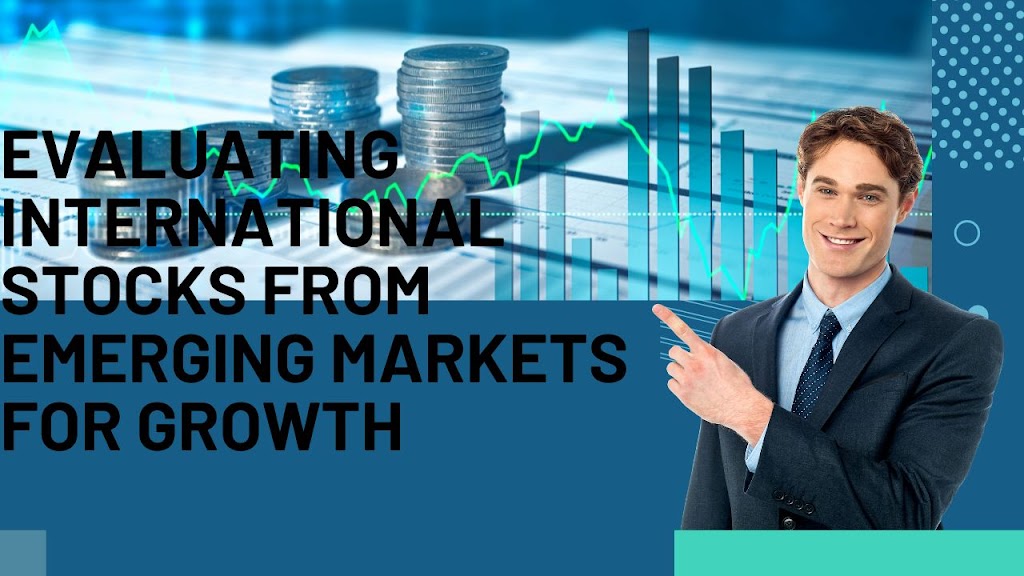With developed markets growing at a sluggish 1-3% annual pace, investors are turning attention to emerging international markets which feature faster growth trajectories. Countries like China, India, Indonesia, Vietnam, Brazil, Mexico and more fit this description.
Their economies are modernizing, populations are young with rising incomes, and there is an appetite for consumer goods. This backdrop allows locally listed companies to deliver above-average earnings and stock growth – if you know how to evaluate them.
This guide will analyze the high-level country dynamics to understand, research fundamentals of specific stocks to identify winners, and assess risk factors when investing in developing markets.
Understanding Emerging Markets
Emerging markets are economies in the process of rapid growth and industrialization supported by several common tailwinds:
- Faster Economic Growth
Most emerging economies feature GDP accelerating at 4-6% annually versus just 2% in developed countries. Their earlier stage in building manufacturing capacity, infrastructure, and consumer base allows for quicker expansion not yet at maturity.
- Demographic Tailwinds
They generally have much younger populations entering prime productivity and spending years, supporting both workforce and consumption growth compared to aging developed countries.
- Rising Disposable Incomes
The past 20 years has seen a thriving middle class emerge across EM’s with discretionary incomes to spend on appliances, electronics, autos, travel and other discretionary goods that enhance quality of life.
- Technology Leapfrogging
Many EM’s went straight to adopting modern tech like e-commerce, mobile payments and internet connectivity without legacy constraints – allowing faster adoption rates of supporting both consumer access and business models.
- Researching Country Fundamentals
While the overall EM proposition is compelling, investability varies greatly across over 150 emerging countries as government policies and local conditions play a key role in shaping business climate. Analyze:
- GDP Growth Trends
Study history and consensus forecasts – countries growing at 6%+ annually for sustained periods suggest locally operating companies likely perform well.
- Political Stability
Is leadership productive or corrupt? Are institutions strong? Social stability? Peaceful power transfers? This shapes the functional environment.
- Regulatory Environment
Favorable tax policies, IP protections, contract enforcement, ease of foreign investment flows etc determine attractiveness.
- Market Reforms
Countries privatizing state-owned enterprises, easing business formation, trade liberalization show transition to transparency and capitalism – positive signs.
Analyzing Local Companies
Once you identify faster-growing EM countries with solid fundamentals, researching locally listed corporations allows capitalizing on the secular economic ascent. Frame analysis across four dimensions:
- Competitive Positioning
Leading companies with strong brands, products, and market share in a growing category will shine. Analyze sources of competitive advantage versus rivals in the region.
- Financial Health Examination
Vet company financials on revenue/earnings growth, cash generation, and margins relative to EM peers to determine quality operators with upside.
- Management Quality
Founders/executives with proven track records in navigating regional nuances. Capital allocation matters when less transparency present.
- ESG Factors
Environmental policies, labor relations, governance structure – given variability in reporting, dig deeper to assess standards.
- Risks To Consider
While alluring growth potential exists in EM stocks, beware risks more pronounced relative to developed markets:
- Currency Fluctuations
Stocks listed locally subject to volatile currency cross-rates that may dampen or exacerbate USD returns. Hedge or diversify across regions.
- Higher Volatility
Emerging markets see exaggerated price movements during global crisis situations given risk aversion. Stomach shorter-term swings.
- Transparency and Reporting
Despite improvements, disclosures and audits remain less stringent than in developed countries – increasing potential of financial manipulation.
Conclusion
Evaluating international stocks from emerging markets necessitates a nuanced approach – balancing the thesis of superior growth tailwinds from industrialization and rising incomes against risks countries face transitioning from underdeveloped status. Avoid falling prey to geographic generalizations. Analyze trends at both macro country level and the micro company health specific to each opportunity for prudent exposure to turbo-charged earnings potential.
FAQs
Q: What percentage of my portfolio is reasonable to dedicate to emerging market stocks?
A: Given higher volatility, limiting EM allocation to 10-20% ensures you capitalize on growth upside while containing risk through diversification.
Q: Are state-owned enterprises good stocks to invest in?
A: Tread carefully – management incentives may not fully align with minority shareholders, so analyze leadership quality and governance policies closely.
Q: Which emerging region is most promising in 2023 – Asia or Latin America?
A: Consensus points to Asian economies outpacing this year given lighter exposure to food/energy inflation shocks and stronger manufacturing competitiveness.
Q: Should I only buy American Depository Receipts or locally listed shares?
A: ADR’s allow easy access for American investors. But foreign ordinaries may feature better liquidity and price discovery matching local investor sentiment.
Q: Does investing in emerging markets require active stock picking?
A: Passive ETFs tracking broad EM indexes offers simplified exposure. But highest returns likely involve identifying prime sectors and stock-specific growth angles.
